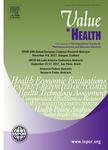版权所有:内蒙古大学图书馆 技术提供:维普资讯• 智图
内蒙古自治区呼和浩特市赛罕区大学西街235号 邮编: 010021

作者机构:Univ Sydney Fac Sci Sch Psychol Sydney NSW Australia Curtin Univ Perth City Campus Perth ACT Australia Dept Hlth Policy & Management Bentley Campus Perth ACT Australia Univ Sydney Fac Med & Hlth NHMRC Clin Trials Ctr Sydney NSW Australia Pain Management Res Inst St Leonards NSW Australia Univ Sydney Sydney Med Sch Sydney NSW Australia Canadian Ctr Appl Res Canc Control Vancouver BC Canada Simon Fraser Univ Fac Hlth Sci Burnaby BC Canada Queensland Univ Technol Sch Publ Hlth Inst Hlth & Biomed Innovat Brisbane Qld Australia Univ Amsterdam Med Ctr Amsterdam Publ Hlth Res Inst Dept Med Psychol Amsterdam Noord Holland Netherlands Univ Technol Sydney Ctr Hlth Econ Res & Evaluat Sydney NSW Australia Univ Illinois Dept Pharm Syst Outcomes & Policy Chicago IL USA Northwestern Univ Feinberg Sch Med Dept Med Social Sci Chicago IL 60611 USA
出 版 物:《VALUE IN HEALTH》 (医疗评估)
年 卷 期:2021年第24卷第6期
页 面:862-873页
核心收录:
学科分类:1204[管理学-公共管理] 0201[经济学-理论经济学] 10[医学]
基 金:EuroQol Research Foundation National Health and Medical Research Council, NHMRC Australian Government Cancer Australia
主 题:condition-specific health-related quality of life multi-attribute utility preference-based QALY quality of life quality-adjusted life-year utility value set
摘 要:Objectives: To develop a cancer-specific multi-attribute utility instrument derived from the Functional Assessment of Cancer Therapy General (FACT-G) health-related quality of life (HRQL) questionnaire. Methods: We derived a descriptive system based on a subset of the 27-item FACT-G. Item selection was informed by psychometric analyses of existing FACT-G data (n = 6912) and by patient input (n = 82). We then conducted an online valuation survey, with participants recruited via an Australian general population online panel. A discrete choice experiment (DCE) was used, with attributes being the HRQL dimensions of the descriptive system and survival duration, and 16 choice-pairs per participant. Utility decrements were estimated with conditional logit and mixed logit modeling. Results: Eight HRQL dimensions were included in the descriptive system: pain, fatigue, nausea, sleep, work, social support, sadness, and future health worry;each with 5 levels. Of 1737 panel members who accessed the valuation survey, 1644 (95%) completed 1 or more DCE choice-pairs and were included in analyses. Utility decrements were generally monotonic;within each dimension, poorer HRQL levels generally had larger utility decrements. The largest utility decrements were for the highest levels of pain (-0.40) and nausea (-0.28). The worst health state had a utility of-0.54, considerably worse than dead. Conclusions: A descriptive system and preference-based scoring approach were developed for the FACT-8D, a new cancer specific multi-attribute utility instrument derived from the FACT-G. The Australian value set is the first of a series of country-specific value sets planned that can facilitate cost-utility analyses based on items from the FACT-G and related FACIT questionnaires containing FACT-G items.